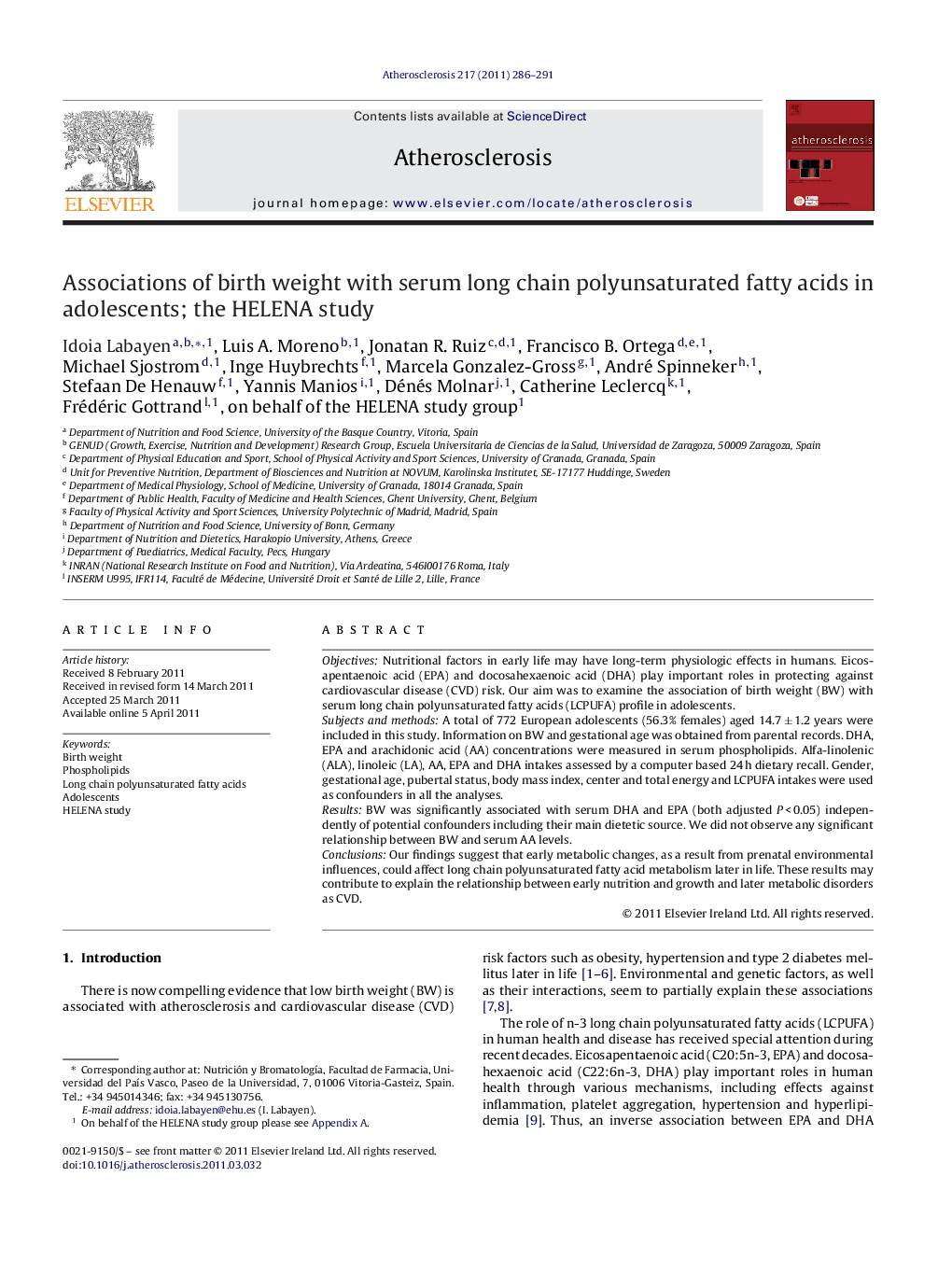| کد مقاله | کد نشریه | سال انتشار | مقاله انگلیسی | نسخه تمام متن |
|---|---|---|---|---|
| 5949664 | 1172389 | 2011 | 6 صفحه PDF | دانلود رایگان |

ObjectivesNutritional factors in early life may have long-term physiologic effects in humans. Eicosapentaenoic acid (EPA) and docosahexaenoic acid (DHA) play important roles in protecting against cardiovascular disease (CVD) risk. Our aim was to examine the association of birth weight (BW) with serum long chain polyunsaturated fatty acids (LCPUFA) profile in adolescents.Subjects and methodsA total of 772 European adolescents (56.3% females) aged 14.7 ± 1.2 years were included in this study. Information on BW and gestational age was obtained from parental records. DHA, EPA and arachidonic acid (AA) concentrations were measured in serum phospholipids. Alfa-linolenic (ALA), linoleic (LA), AA, EPA and DHA intakes assessed by a computer based 24 h dietary recall. Gender, gestational age, pubertal status, body mass index, center and total energy and LCPUFA intakes were used as confounders in all the analyses.ResultsBW was significantly associated with serum DHA and EPA (both adjusted P < 0.05) independently of potential confounders including their main dietetic source. We did not observe any significant relationship between BW and serum AA levels.ConclusionsOur findings suggest that early metabolic changes, as a result from prenatal environmental influences, could affect long chain polyunsaturated fatty acid metabolism later in life. These results may contribute to explain the relationship between early nutrition and growth and later metabolic disorders as CVD.
Journal: Atherosclerosis - Volume 217, Issue 1, July 2011, Pages 286-291